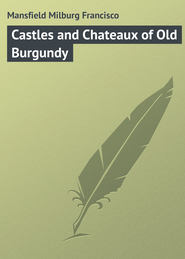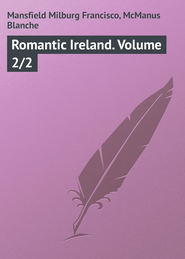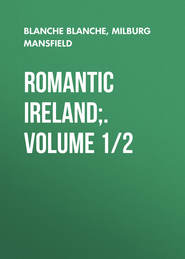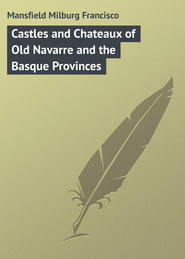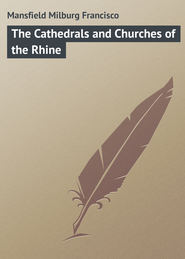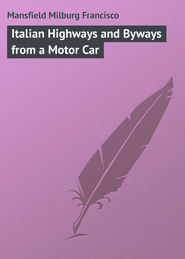По всем вопросам обращайтесь на: info@litportal.ru
(©) 2003-2024.
✖
In the Land of Mosques & Minarets
Настройки чтения
Размер шрифта
Высота строк
Поля
ALGERIA OF TO-DAY
“Le coq Gaulois est le coq de la gloire.
Il chante bien fort quand il gagne une victoire
Et encore plus fort quand il est battu.”
Algeria is by no means savage Africa, even though its population is mostly indigène. It forms a “circonscription académique” of France. It has a national observatory, a branch of that at Paris, founded in 1858; a school of medicine and pharmacy; a school of law; a faculty of letters and sciences, and three endowed chairs of Arabic, at Algiers (founded in 1836); Oran (1850) and Constantine (1858).
Algeria has a great future in store, although it has cost France 8,593,000,000 francs since its occupation seventy years ago, and has only produced a revenue of 2,330,000,000 francs, which represents the loss of a sum greater than the war indemnity of 1870. The Algerian budget balanced for the first time in 1901 without subsidies from home.
The entire population of Algeria is 4,124,732, of which 3,524,000 are Arabs, Kabyles or
Berbers, and the subdivided races hereafter mentioned, leaving in the neighbourhood of 600,000 Europeans, whose numbers are largely increasing each year.
The rate of increase of the European population, from 1836, when the French first occupied the country, has been notable. In 1836 there were 14,561 Europeans in the colony; in 1881, 423,881, of which 233,937 were French, 112,047 Spanish, and 31,865 Italians, and to-day the figure is over 600,000.
The Arab and Berber population, too, are notably increasing; they are not disappearing like the red man. From 2,320,000, in 1851, they have increased, in 1891, to 3,524,000.
In addition to the Arab and Berber population of Algeria, and the “foreigners” and Europeans, there are the following:
Moors – (90,500), the mixed issue of the Berbers and all the races inhabiting Algeria.
Koulouglis – (20,000), born of Turks and Moorish women.
Jews – (47,667), who by the decree of 1870 were made French. (This does not include unnaturalized Jews.)
Negroes – (5,000), the former slaves who were freed in 1848.
The French colonist in Algeria, the man on the spot, understands the Arab question better than the minister and officials of the Colonial Office of the Pavilion Sully, though the French have succeeded in making of Algeria what they have never accomplished with their other colonies – a paying proposition at last. Still France governs Algeria under a sort of “up-the-state,” “Raines-law” rule, and treats the indigène of Laghouat or Touggourt as they would a boatman of Pontoise or a farm labourer of Étampes. The French colonial howls against all the mistakes and indiscretions of a “Boulevard Government” for the Sahara, and even revile the Governor General, whom he calls a civilian dressed up in military garb and no governor at all. Que diable! This savours of partisanship and politics, but it is an echo of what one hears as “café talk” any time he opens his ears in Algiers.
All is peace and concord within, however, in spite of the small talk of the cafés; and the Arab and European live side by side, each enjoying practically the same rights and protection that they would if they lived in suburban Paris.
The Caïd or Sheik or head man of a tribe is the go-between in all that concerns the affairs of the native with the French government.
The name Caïd was formerly given to the governors of the provinces of the Barbary States, but to-day that individual has absolutely disappeared, though he still remains as an administrator of French law, under the surveillance of the military government. In reality the Caïd still remains the official head of his tribe, and in this position is sustained by the French authorities.
The Arab has adopted the new order of things very graciously, but he can’t get over his ancient desire to hoard gold; and, for that reason, no Algerian gold coin exists, and there is no gold in circulation to speak of. The Arab, when he gets it, buries it, forgets where, or dies and forgets to tell any one where, which is the same thing, and thus a certain very considerable amount is lost to circulation.
Paper money, in values of twenty and fifty francs, takes the place of gold; the Arab thinks that it is something that is perishable, and accordingly spends it and keeps the country prosperous. The French understand the Arab and his foibles; there is no doubt about that. They solved the question of a circulating currency in Algeria. New York and Washington representatives of haute finance might take a few lessons here.
With regard to the money question, the stranger in Algeria must beware of false and non-current coin. Anything that’s a coin looks good to an Arab, and for that reason a large amount of spurious stuff is in circulation. It was originally made by counterfeiters to gull the native, but to-day the stranger gets his share, or more than his share.
To replace the gold “louis” of France, the Banque d’Algérie issues “shin-plasters” of twenty francs. They are convenient, but one must get rid of them before leaving the country or else sell them to a money changer at a discount. These Algerian bank-notes now pass current in Tunisia, a branch of the parent bank having recently been opened there.
The commercial possibilities of Algeria have hardly, as yet, begun to be exploited, though the wine and wheat-growing lands are highly developed; and, since their opening, have suffered no lack of prosperity, save for a plague of phylloxera which set back the vines on one occasion, and a plague of locusts which one day devastated almost the entire region of the wheat-growing plateaux. It was then the Arabs became locust-eaters, though indeed they are not become a cult as in Japan. With the Arab it was a case of eating locusts or nothing, for there was no grain.
This plague of locusts fell upon the province of Constantine in 1885, and from Laghouat to Bou-Saada, and from Kenchela to Aumale they were brought in myriads by the sirocco of the desert from no one knows where.
For two years these great cereal-growing areas were cleared of their crops as though a wild-fire had passed over them, until finally the government by strenuous efforts, and the employment of many thousands of labourers, was able to control and arrest the march of the plague.
During this period many of the new colonists saw their utmost resources disappear; but gallantly they took up their task anew, and for the past dozen years only occasional slight recurrences of the pest have been noted, and they, fortunately, have been suppressed as they appeared.
Besides wheat and wine, tobacco is an almost equal source of profit to Algeria. In France no one may grow a tobacco plant, even as an embellishment to his garden-plot, without first informing the excise authorities, who, afterwards, will come around periodically and count the leaves. In Africa the tobacco crop is something that brings peace and plenty to any who will cultivate it judiciously, for the consumption of the weed is great.
Manufactured tobacco is cheap in Algeria. Neither cigars, cigarettes nor pipe mixtures, nor snuff either, pay any excise duties; and even foreign tobaccos, which mostly come from Hungary and the Turkish provinces, pay very little.
Two-thirds of the Algerian manufactured product is made from home-grown tobacco, and a very large quantity of the same is sent to France to be sold as “Maryland;” though, indeed, if the original plants ever came from the other side of the water, it was by a very roundabout route. Certainly the broom-corn tobacco of France does not resemble that of Maryland in the least. The hope of France and her colonies is to grow all the tobacco consumed within her frontiers, whether it is labelled “Maryland,” “Turkish” or “Scaferlati.” The French government puts out some awful stuff it calls tobacco and sells under fancy names.
The tobacco tax in Algeria is nil, and that on wine is nearly so. Four sous a hectolitre (100 litres) is not a heavy tax to pay, though when it was first applied (in 1907) it was the excuse for the retail wine dealer (who in Algeria is but human, when he seeks to make what profit he can) to add two sous to the price of his wine per litre. There is a law in France against unfair trading, and the same applies to Algeria. It has been a dead law in many places for many years, but when a tax of four sous a hectolitre, originally paid to the state, by the dealer, finally came out of the consumer’s pocket as ten francs, an increase of 5,000 per cent., popular clamour and threats of the law caused the dealer to drop back to his original price. This is the way Algeria protects its growing wine industry. Publicists and economists elsewhere should study the system.
The African landscape is very simple and very expressive, severe but not sad, lively but not gay. The great level horizon bars the way south towards the wastes of the Sahara, and the mountains of the Atlas are ever present nearer at hand. The desert of romance, le vrai désert, is still a long way off; and, though there is now a macadamized road to Bou-Saada and Biskra, and a railway to Figuig and beyond, civilization is still only at the vestibule of the Sahara. The real development and exploitation of North Africa and its peoples and riches is yet to come.
As for the climate, that of California is undoubtedly superior to that of Algeria, but the topographical and agricultural characteristics are much the same. The greatest difference which will be remarked by an American crossing Algeria from Oran to Souk-Ahras will be the distinct “foreign note” of the installation of its farming communities. Haystacks are plastered over with mud; carts are drawn by mules or horses hitched tandemwise, three, four or five on end, and the carts are mostly two-wheeled at that. There are no fences and no great barns for stocking fodder or sheltering cattle; the farmhouses are all of stone, bare or stucco-covered, and range in colour from sky-blue to pale pink and vivid yellow. There is some American farming machinery in use, but the Arab son of the soil still largely works with the implements of Biblical times.
The winter of Algeria is the winter of Syria, of Japan, and reminiscent to some extent of California; perhaps not so mild on the whole, but still something of an approach thereto. Another contrast favourable to California is that in Algeria there is a lack of certain refinements of modern travel which are to be had in the “land of sunshine.” Winter, properly speaking, does not come to Algeria except on the high plateaux of the provinces of Oran, Alger and Constantine, and on the mountain peaks of the Atlas, and in Kabylie.
South of Algiers stretches the great plain of the Mitidja, which is like no other part of the earth’s surface so much as it is like Normandy with respect to its prairies, “la Beauce” for its wheat-fields and its grazing-grounds, and the Bordelais for its vineyards.
At the western extremity of the Mitidja commence the orange-groves of Blida, the forests of olive-trees, and the eucalyptus of La Trappe. The scene is immensely varied and suggestive of untold wealth and prosperity at every kilometre.
Suburban Algiers is thickly built with villas, more or less after the Moorish style, but owned by Europeans. Recently the wealthy Arab has taken to building his “country house” on similar gracious lines; and, when he does, he keeps pretty near to accepted Moorish elements and details, whereas the European, the colon, or the commerçant grown rich, carries out his idea on the Meudon or St. Cloud plan. The Moorish part is all there, but the thing often doesn’t hang together.
To the eastward back of the mountains of Kabylie lies the great plateau region of the Tell.
The Tell is a region vastly different in manners and customs from either the desert or the Algerian littoral. The manners of the nomad of the Sahara here blend into those of the farming peasant; but, by the time Batna is reached, they become tainted with the commercialism of the outside world. At Constantine there is much European influence at work, and at the seacoast towns of Bona or Philippeville the Oriental perfume of the date-palm is lost in that of the smells and cosmopolitanism usually associated with great seaports. These four distinct characteristics mark four distinct regions of the Numidia of the ancients, to-day the wheat-growing region of the Tell.
The principal mountain peaks in Algeria rise to no great heights. Touabet, near Tlemcen, is 1,620 metres in height; the highest peak of the Grand Kabylie Range, in the province of Alger, is 2,308 metres; and Chelia, in Constantine, 2,328 metres. They are not bold, rugged mountains, but rolling, rounded crests, often destitute of verdure to the point of desolation.
The development of the regions forming the hinterland– practically one may so call the Sahara – is of constant and assiduous care to the authorities. They have done much and are doing much more as statistics indicate.
In the valley of the Oued-Righ and the Ziban, one of the most favoured of these borderlands, the government statistics of springs and oases are as follows (1880-90): —
And as the population increases and fruit-growing areas are further developed, the military engineers come along and dig more wells.
The following average temperatures and rainfall show the contrast between various regions: —
It will be noted that, normally, there is very little difference in temperature, and a very considerable difference in rainfall.
The extreme recorded winter temperatures are as follows: —
Algeria has something like 3,100 kilometres of standard gauge railway, and various light railways, or narrow gauge roads, of from ten to fifty kilometres in length, aggregating perhaps five hundred kilometres more. Railway building and development is going on constantly, but they don’t yet know what an express train is, and the sleeping and dining car services are almost as bad as they are in England. The real up-to-date sleeping-car has electric lights and hot and cold water as well as steam heat. They have dreamed of none of these things yet in England or Africa.
The railway is the chief civilizing developer of a country. The railway receipts in Algeria in 1870 were 2,500,000 francs. In 1900 they were 26,000,000 francs. That’s an increase of a thousand per cent., and it all came out of the country.
The “Routes Nationales” of Algeria (not counting by-roads, etc.), the real arteries of the life-blood of the country, at the same periods numbered almost an equal extent, and they are still being built. Give a new country good roads and good railways and it is bound to prosper.
Four millions of the total population of Algeria (including something over two hundred thousand Europeans) are dependent upon agriculture for their livelihood. Wheat, wine and tobacco rank in importance in the order named.
The growth of the wine industry has been most remarkable.
“Le coq Gaulois est le coq de la gloire.
Il chante bien fort quand il gagne une victoire
Et encore plus fort quand il est battu.”
Algeria is by no means savage Africa, even though its population is mostly indigène. It forms a “circonscription académique” of France. It has a national observatory, a branch of that at Paris, founded in 1858; a school of medicine and pharmacy; a school of law; a faculty of letters and sciences, and three endowed chairs of Arabic, at Algiers (founded in 1836); Oran (1850) and Constantine (1858).
Algeria has a great future in store, although it has cost France 8,593,000,000 francs since its occupation seventy years ago, and has only produced a revenue of 2,330,000,000 francs, which represents the loss of a sum greater than the war indemnity of 1870. The Algerian budget balanced for the first time in 1901 without subsidies from home.
The entire population of Algeria is 4,124,732, of which 3,524,000 are Arabs, Kabyles or
Berbers, and the subdivided races hereafter mentioned, leaving in the neighbourhood of 600,000 Europeans, whose numbers are largely increasing each year.
The rate of increase of the European population, from 1836, when the French first occupied the country, has been notable. In 1836 there were 14,561 Europeans in the colony; in 1881, 423,881, of which 233,937 were French, 112,047 Spanish, and 31,865 Italians, and to-day the figure is over 600,000.
The Arab and Berber population, too, are notably increasing; they are not disappearing like the red man. From 2,320,000, in 1851, they have increased, in 1891, to 3,524,000.
In addition to the Arab and Berber population of Algeria, and the “foreigners” and Europeans, there are the following:
Moors – (90,500), the mixed issue of the Berbers and all the races inhabiting Algeria.
Koulouglis – (20,000), born of Turks and Moorish women.
Jews – (47,667), who by the decree of 1870 were made French. (This does not include unnaturalized Jews.)
Negroes – (5,000), the former slaves who were freed in 1848.
The French colonist in Algeria, the man on the spot, understands the Arab question better than the minister and officials of the Colonial Office of the Pavilion Sully, though the French have succeeded in making of Algeria what they have never accomplished with their other colonies – a paying proposition at last. Still France governs Algeria under a sort of “up-the-state,” “Raines-law” rule, and treats the indigène of Laghouat or Touggourt as they would a boatman of Pontoise or a farm labourer of Étampes. The French colonial howls against all the mistakes and indiscretions of a “Boulevard Government” for the Sahara, and even revile the Governor General, whom he calls a civilian dressed up in military garb and no governor at all. Que diable! This savours of partisanship and politics, but it is an echo of what one hears as “café talk” any time he opens his ears in Algiers.
All is peace and concord within, however, in spite of the small talk of the cafés; and the Arab and European live side by side, each enjoying practically the same rights and protection that they would if they lived in suburban Paris.
The Caïd or Sheik or head man of a tribe is the go-between in all that concerns the affairs of the native with the French government.
The name Caïd was formerly given to the governors of the provinces of the Barbary States, but to-day that individual has absolutely disappeared, though he still remains as an administrator of French law, under the surveillance of the military government. In reality the Caïd still remains the official head of his tribe, and in this position is sustained by the French authorities.
The Arab has adopted the new order of things very graciously, but he can’t get over his ancient desire to hoard gold; and, for that reason, no Algerian gold coin exists, and there is no gold in circulation to speak of. The Arab, when he gets it, buries it, forgets where, or dies and forgets to tell any one where, which is the same thing, and thus a certain very considerable amount is lost to circulation.
Paper money, in values of twenty and fifty francs, takes the place of gold; the Arab thinks that it is something that is perishable, and accordingly spends it and keeps the country prosperous. The French understand the Arab and his foibles; there is no doubt about that. They solved the question of a circulating currency in Algeria. New York and Washington representatives of haute finance might take a few lessons here.
With regard to the money question, the stranger in Algeria must beware of false and non-current coin. Anything that’s a coin looks good to an Arab, and for that reason a large amount of spurious stuff is in circulation. It was originally made by counterfeiters to gull the native, but to-day the stranger gets his share, or more than his share.
To replace the gold “louis” of France, the Banque d’Algérie issues “shin-plasters” of twenty francs. They are convenient, but one must get rid of them before leaving the country or else sell them to a money changer at a discount. These Algerian bank-notes now pass current in Tunisia, a branch of the parent bank having recently been opened there.
The commercial possibilities of Algeria have hardly, as yet, begun to be exploited, though the wine and wheat-growing lands are highly developed; and, since their opening, have suffered no lack of prosperity, save for a plague of phylloxera which set back the vines on one occasion, and a plague of locusts which one day devastated almost the entire region of the wheat-growing plateaux. It was then the Arabs became locust-eaters, though indeed they are not become a cult as in Japan. With the Arab it was a case of eating locusts or nothing, for there was no grain.
This plague of locusts fell upon the province of Constantine in 1885, and from Laghouat to Bou-Saada, and from Kenchela to Aumale they were brought in myriads by the sirocco of the desert from no one knows where.
For two years these great cereal-growing areas were cleared of their crops as though a wild-fire had passed over them, until finally the government by strenuous efforts, and the employment of many thousands of labourers, was able to control and arrest the march of the plague.
During this period many of the new colonists saw their utmost resources disappear; but gallantly they took up their task anew, and for the past dozen years only occasional slight recurrences of the pest have been noted, and they, fortunately, have been suppressed as they appeared.
Besides wheat and wine, tobacco is an almost equal source of profit to Algeria. In France no one may grow a tobacco plant, even as an embellishment to his garden-plot, without first informing the excise authorities, who, afterwards, will come around periodically and count the leaves. In Africa the tobacco crop is something that brings peace and plenty to any who will cultivate it judiciously, for the consumption of the weed is great.
Manufactured tobacco is cheap in Algeria. Neither cigars, cigarettes nor pipe mixtures, nor snuff either, pay any excise duties; and even foreign tobaccos, which mostly come from Hungary and the Turkish provinces, pay very little.
Two-thirds of the Algerian manufactured product is made from home-grown tobacco, and a very large quantity of the same is sent to France to be sold as “Maryland;” though, indeed, if the original plants ever came from the other side of the water, it was by a very roundabout route. Certainly the broom-corn tobacco of France does not resemble that of Maryland in the least. The hope of France and her colonies is to grow all the tobacco consumed within her frontiers, whether it is labelled “Maryland,” “Turkish” or “Scaferlati.” The French government puts out some awful stuff it calls tobacco and sells under fancy names.
The tobacco tax in Algeria is nil, and that on wine is nearly so. Four sous a hectolitre (100 litres) is not a heavy tax to pay, though when it was first applied (in 1907) it was the excuse for the retail wine dealer (who in Algeria is but human, when he seeks to make what profit he can) to add two sous to the price of his wine per litre. There is a law in France against unfair trading, and the same applies to Algeria. It has been a dead law in many places for many years, but when a tax of four sous a hectolitre, originally paid to the state, by the dealer, finally came out of the consumer’s pocket as ten francs, an increase of 5,000 per cent., popular clamour and threats of the law caused the dealer to drop back to his original price. This is the way Algeria protects its growing wine industry. Publicists and economists elsewhere should study the system.
The African landscape is very simple and very expressive, severe but not sad, lively but not gay. The great level horizon bars the way south towards the wastes of the Sahara, and the mountains of the Atlas are ever present nearer at hand. The desert of romance, le vrai désert, is still a long way off; and, though there is now a macadamized road to Bou-Saada and Biskra, and a railway to Figuig and beyond, civilization is still only at the vestibule of the Sahara. The real development and exploitation of North Africa and its peoples and riches is yet to come.
As for the climate, that of California is undoubtedly superior to that of Algeria, but the topographical and agricultural characteristics are much the same. The greatest difference which will be remarked by an American crossing Algeria from Oran to Souk-Ahras will be the distinct “foreign note” of the installation of its farming communities. Haystacks are plastered over with mud; carts are drawn by mules or horses hitched tandemwise, three, four or five on end, and the carts are mostly two-wheeled at that. There are no fences and no great barns for stocking fodder or sheltering cattle; the farmhouses are all of stone, bare or stucco-covered, and range in colour from sky-blue to pale pink and vivid yellow. There is some American farming machinery in use, but the Arab son of the soil still largely works with the implements of Biblical times.
The winter of Algeria is the winter of Syria, of Japan, and reminiscent to some extent of California; perhaps not so mild on the whole, but still something of an approach thereto. Another contrast favourable to California is that in Algeria there is a lack of certain refinements of modern travel which are to be had in the “land of sunshine.” Winter, properly speaking, does not come to Algeria except on the high plateaux of the provinces of Oran, Alger and Constantine, and on the mountain peaks of the Atlas, and in Kabylie.
South of Algiers stretches the great plain of the Mitidja, which is like no other part of the earth’s surface so much as it is like Normandy with respect to its prairies, “la Beauce” for its wheat-fields and its grazing-grounds, and the Bordelais for its vineyards.
At the western extremity of the Mitidja commence the orange-groves of Blida, the forests of olive-trees, and the eucalyptus of La Trappe. The scene is immensely varied and suggestive of untold wealth and prosperity at every kilometre.
Suburban Algiers is thickly built with villas, more or less after the Moorish style, but owned by Europeans. Recently the wealthy Arab has taken to building his “country house” on similar gracious lines; and, when he does, he keeps pretty near to accepted Moorish elements and details, whereas the European, the colon, or the commerçant grown rich, carries out his idea on the Meudon or St. Cloud plan. The Moorish part is all there, but the thing often doesn’t hang together.
To the eastward back of the mountains of Kabylie lies the great plateau region of the Tell.
The Tell is a region vastly different in manners and customs from either the desert or the Algerian littoral. The manners of the nomad of the Sahara here blend into those of the farming peasant; but, by the time Batna is reached, they become tainted with the commercialism of the outside world. At Constantine there is much European influence at work, and at the seacoast towns of Bona or Philippeville the Oriental perfume of the date-palm is lost in that of the smells and cosmopolitanism usually associated with great seaports. These four distinct characteristics mark four distinct regions of the Numidia of the ancients, to-day the wheat-growing region of the Tell.
The principal mountain peaks in Algeria rise to no great heights. Touabet, near Tlemcen, is 1,620 metres in height; the highest peak of the Grand Kabylie Range, in the province of Alger, is 2,308 metres; and Chelia, in Constantine, 2,328 metres. They are not bold, rugged mountains, but rolling, rounded crests, often destitute of verdure to the point of desolation.
The development of the regions forming the hinterland– practically one may so call the Sahara – is of constant and assiduous care to the authorities. They have done much and are doing much more as statistics indicate.
In the valley of the Oued-Righ and the Ziban, one of the most favoured of these borderlands, the government statistics of springs and oases are as follows (1880-90): —
And as the population increases and fruit-growing areas are further developed, the military engineers come along and dig more wells.
The following average temperatures and rainfall show the contrast between various regions: —
It will be noted that, normally, there is very little difference in temperature, and a very considerable difference in rainfall.
The extreme recorded winter temperatures are as follows: —
Algeria has something like 3,100 kilometres of standard gauge railway, and various light railways, or narrow gauge roads, of from ten to fifty kilometres in length, aggregating perhaps five hundred kilometres more. Railway building and development is going on constantly, but they don’t yet know what an express train is, and the sleeping and dining car services are almost as bad as they are in England. The real up-to-date sleeping-car has electric lights and hot and cold water as well as steam heat. They have dreamed of none of these things yet in England or Africa.
The railway is the chief civilizing developer of a country. The railway receipts in Algeria in 1870 were 2,500,000 francs. In 1900 they were 26,000,000 francs. That’s an increase of a thousand per cent., and it all came out of the country.
The “Routes Nationales” of Algeria (not counting by-roads, etc.), the real arteries of the life-blood of the country, at the same periods numbered almost an equal extent, and they are still being built. Give a new country good roads and good railways and it is bound to prosper.
Four millions of the total population of Algeria (including something over two hundred thousand Europeans) are dependent upon agriculture for their livelihood. Wheat, wine and tobacco rank in importance in the order named.
The growth of the wine industry has been most remarkable.






